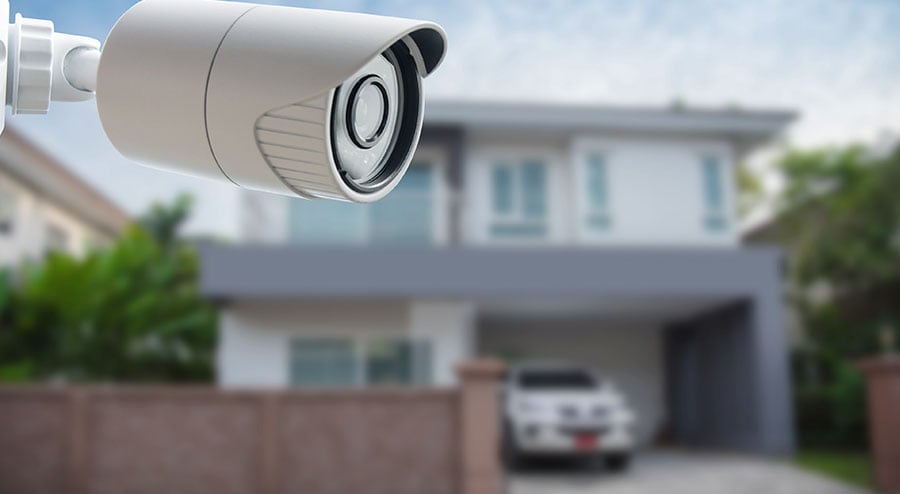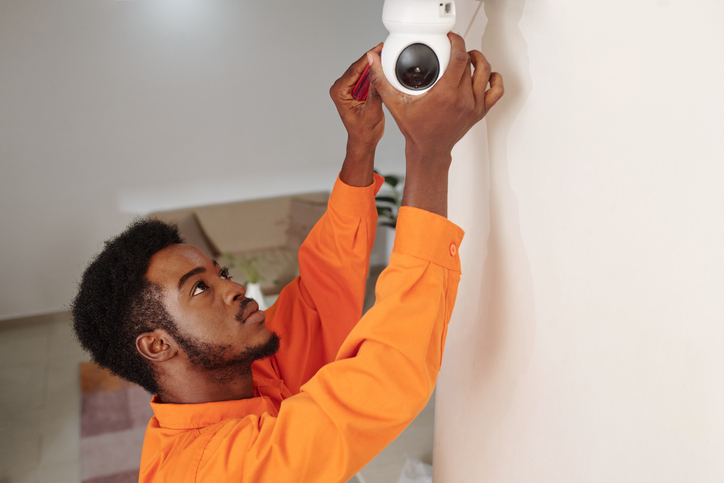Home security is a vital aspect of protecting one’s property and ensuring the safety of loved ones. With the increasing prevalence of burglary and property crimes, the demand for reliable home security systems has been on the rise. Investing in a robust security system provides homeowners with peace of mind and a heightened sense of security.

Having a clear understanding of the factors that affect the cost of home security systems, the different types of systems available, the associated monitoring costs, and other essential considerations, allows individuals to strike a balance between affordability and the level of protection they desire.
Factors Affecting Home Security System Cost
The cost of a home security system can be influenced by several factors that homeowners should consider before making a purchase. First and foremost the size and layout of the home play a significant role in determining the cost. Larger homes may require more sensors, cameras, and other components for comprehensive coverage, resulting in a higher overall cost compared to smaller residences.
The level of protection desired by homeowners also affects the cost. Basic security systems that include essential components like door and window sensors, along with an alarm, tend to be more affordable. However, those seeking advanced features like motion sensors, glass break detectors, and smart home integration should expect a higher price point due to the increased functionality and technology involved.
Another factor to consider is the type of monitoring preferred: professional or self-monitoring. Professional monitoring, provided by security companies, involves a monthly fee for round-the-clock monitoring and response to alarms. Self-monitoring, on the other hand, relies on the homeowners to handle notifications themselves using a mobile app or other means. Professional monitoring generally comes at a higher cost but offers the convenience of professional assistance.
Additional features and equipment can also impact the cost of a home security system. These may include outdoor cameras, video doorbells, smoke detectors, and home automation integration. Each of these extras comes with its own price tag, so homeowners should carefully consider which features are necessary for their specific security needs.
Finally, the installation type, whether professional or do-it-yourself (DIY), is a factor to consider. Professional installation usually incurs an upfront fee but ensures proper setup and integration of the system. Companies like ADT offer professional installation for their wired systems, ensuring proper wiring and integration throughout the home. This can provide a more permanent and reliable solution, as wired systems are not susceptible to signal interference or range limitations.
On the other hand, DIY installation, while often more cost-effective, requires homeowners to handle the installation themselves, which may require technical knowledge and time investment. A popular DIY option is a wireless system that provides flexibility and convenience, as the components communicate via wireless signals. However, it’s important to note that wireless systems may be more susceptible to signal interference and range limitations, depending on factors such as the layout of the home and the strength of the wireless network.
The size and layout of the home, desired level of protection, monitoring type, additional features, and installation method should be taken into account so homeowners can better understand the cost considerations and make an informed decision when selecting a home security system that suits their needs and budget.
Types of Home Security Systems and Their Costs
There are two main types of security systems: basic and advanced. Basic security systems are typically cheaper and provide only the essential components of a security system. Advanced systems on the other hand are more expensive but include customizable features that strengthen home security.
Basic Home Security Systems
A basic home security system typically consists of essential components that provide a foundation for protection. These components often include a control panel, door and window sensors, and an alarm. The cost of a basic system can range from around $200 to $500, depending on the brand, the number of sensors needed, and any additional features included.
One reputable brand to consider is SimpliSafe, which offers a basic package priced at $229. This package includes a base station, keypad, entry sensor, and motion sensor. Additional sensors and devices, such as window sensors and cameras, can be purchased separately to customize the system. SimpliSafe also provides professional monitoring options, starting at $14.99 per month, for homeowners seeking the convenience of a dedicated security team.
When considering basic systems, it’s important to be aware of any additional fees or charges. Some companies, like ADT, offer professional installation for an additional fee. Alternatively, opting for a do-it-yourself (DIY) installation can save on installation costs. Ring, a popular brand, offers both wired and wireless options. The Ring Alarm 5-Piece Kit, a wireless system priced at $199, includes a base station, keypad, contact sensor, motion detector, and range extender. The Ring Alarm Security Kit is also available as a wired system, starting at $199, but requires professional installation, which comes with an additional fee.
Advanced Home Security Systems
Advanced home security systems offer additional features and capabilities for enhanced protection. These systems may include motion sensors, glass break detectors, smart home integration, and more. The cost of an advanced system can range from $500 to $1,500 or more, depending on the brand, the number of devices, and the level of customization.
For those seeking advanced security features, brands like ADT and Vivint offer comprehensive solutions. ADT’s Control package, priced at $599, includes a control panel, entry sensors, motion sensors, and a key fob. ADT also offers smart home integration and professional installation. Monitoring plans for ADT systems start at $45.99 per month and can be customized based on desired protection levels.
Vivint is another brand known for its advanced security systems. Their systems include features like motion sensors, glass break detectors, smart home integration, and video surveillance. The cost of Vivint systems can vary based on customization and specific requirements. It is recommended to request a personalized quote to determine the exact pricing for an advanced system from Vivint.
When considering advanced systems, it’s important to inquire about any long-term contracts or cancellation fees. Some security companies may require contracts for a specified period, typically one to three years. Early termination of the contract may result in cancellation fees. Therefore, carefully reviewing the terms and conditions is crucial before committing to an advanced system.
Homeowners can evaluate the features, costs, and services of basic and advanced home security systems to make an informed decision that suits their security needs and budget.
Monitoring Costs and Options
Monitoring is a crucial aspect of a comprehensive home security system as it provides round-the-clock surveillance and ensures prompt response to potential threats. When it comes to monitoring, homeowners have two main options: professional monitoring and self-monitoring.
Professional Monitoring
Professional monitoring involves outsourcing the surveillance of your home security system to a dedicated monitoring center. In the event of an alarm activation, trained professionals are alerted and take appropriate action, such as contacting the homeowner, emergency services, or dispatching a security guard. This option provides an additional layer of security and peace of mind.
Brands like ADT offer professional monitoring services starting at $45.99 per month, which includes 24/7 monitoring, access to emergency response services, and technical support. SimpliSafe also provides professional monitoring starting at $14.99 per month, offering professional assistance in handling alarms and emergencies.
Self-Monitoring
Self-monitoring allows homeowners to oversee their security system themselves using a mobile app or web portal. When an alarm is triggered, the system sends notifications directly to the homeowner’s smartphone or other devices. The responsibility lies with the homeowner to take appropriate action, such as contacting the authorities or neighbors.
While self-monitoring offers greater control and flexibility, it typically has lower monthly costs compared to professional monitoring. Some security systems, like Ring Alarm, offer free self-monitoring features, allowing homeowners to receive alerts and access their system remotely without incurring any additional fees. Other brands, like Nest Secure, offer optional professional monitoring services for an additional fee, usually around $19 to $29 per month.
Type of Monitoring and its Impact on Cost
The type of monitoring connection can also impact the cost of home security systems. Traditionally, landline connections were common, relying on a physical phone line to communicate with the monitoring center. However, with the advancement of technology, cellular and broadband monitoring have become more prevalent.
Cellular monitoring, which utilizes a cellular network to transmit signals, offers greater reliability and security. It eliminates the vulnerability of a physical phone line being cut or disabled. On the other hand, broadband monitoring uses an internet connection to transmit signals, offering fast communication but relying on the stability of the home’s internet service.
While both cellular and broadband monitoring are popular choices, they may come at an additional cost compared to landline monitoring. Homeowners should consult with security system providers, such as Frontpoint or Brinks Home Security, to understand the specific costs associated with each monitoring option and select the one that best suits their needs and budget.
It’s important to consider the benefits and costs associated with professional monitoring and self-monitoring, as well as the type of monitoring connection, so homeowners can make an informed decision about the monitoring options that align with their security requirements and financial considerations.
Additional Considerations
When selecting a home security system, it is important to consider possible insurance discounts, hidden costs and fees, and regional variations of security companies.
Insurance Discounts and Savings
One significant benefit of having a home security system is the potential for insurance discounts. Insurance providers often offer discounts on homeowners’ insurance premiums for homes equipped with security systems. By reducing the risk of theft or damage, a home security system demonstrates to insurance companies that proactive measures are in place to protect the property. These discounts can vary depending on the insurance provider and the specific security system installed.
For example, State Farm, a well-known insurance provider, offers discounts of up to 20% on homeowners’ insurance premiums for homes with monitored security systems. Similarly, Allstate provides discounts, with the percentage varying based on the type of security system and the level of monitoring.
These insurance discounts can help offset some of the costs associated with a security system over time. Homeowners should consult with their insurance provider to determine the specific discounts available and the requirements for eligibility. It is important to note that not all insurance providers offer discounts, so it’s essential to shop around and compare policies to maximize potential savings.
Hidden Costs and Fees
When purchasing a security system, homeowners should be aware of potential hidden costs that may arise. These costs can include activation or setup fees, maintenance plans, and warranties.
Activation or setup fees are one-time charges associated with starting or initiating the security system’s services. Some companies may waive these fees or offer promotions, while others may require payment upfront. It’s important to clarify any activation or setup fees with the chosen security provider before making a commitment.
Maintenance plans are another consideration. Some security companies offer maintenance plans for an additional fee. These plans typically cover regular system maintenance, repairs, and technical support. Homeowners should evaluate the terms and costs associated with these plans to determine if they align with their needs and budget.
Warranties are essential for protecting the investment in a security system. They provide coverage for potential defects or malfunctions in the equipment. Different companies offer varying warranty terms and conditions, including the length of coverage and any associated costs. It’s advisable to review the warranty details and understand the level of protection provided by the security system manufacturer.
By being aware of these potential hidden costs and fees, homeowners can make informed decisions and evaluate the overall cost of the security system more accurately.
Regional Variations and Promotions
The cost of home security systems can vary regionally due to factors such as local market competition, cost of living, and availability of service providers. For example, prices may differ between urban and rural areas or between states. Homeowners should research and compare security system costs specific to their location to get a better understanding of regional variations.
Oftentimes the security companies will run promotions, discounts, or special offers to attract new customers or during specific periods like holidays or national security awareness months. These promotions can provide opportunities to secure a security system at a discounted price or with added benefits. It’s recommended to regularly check the websites or contact security companies directly to inquire about any ongoing promotions or discounts available.
Additionally, some security companies offer financing options to help homeowners manage the upfront costs of purchasing a security system. These options allow customers to pay for the system in installments over a specified period. Homeowners should inquire about financing options available from the security providers they are considering and evaluate the associated terms and interest rates.
Homeowners should consider regional variations, taking advantage of promotions, and exploring financing options to potentially reduce the overall cost of installing a home security system while still ensuring the safety and protection of their property.
The Takeaway
Understanding the factors that influence the cost of a home security system is crucial for homeowners looking to invest in reliable protection. Factors such as the size and layout of the home, desired level of protection, type of monitoring, additional features, and installation type all play a role in determining the overall cost. Brands like SimpliSafe, ADT, Ring, and Vivint offer a range of options, from basic systems to advanced ones, with varying costs and features. It’s also important for homeowners to be aware of potential hidden costs, such as activation/setup fees, maintenance plans, and warranties so they can select a home security system that provides the desired level of protection while being mindful of their financial considerations.




